CAPT Mervyn Sharp Bennion, 54, USN (1887-1941)
USS West Virginia (BB-48)
Pearl Harbor, Hawaii
December 7, 1941
Presented March 14, 1942
Posthumous

The President of the United States of America, in the name of The Congress, takes pride in presenting the MEDAL OF HONOR posthumously to
CAPTAIN MERVYN SHARP BENNION, UNITED STATES NAVY
for service as set forth in the following:
CITATION:
For conspicuous devotion to duty, extraordinary courage, and complete disregard of his own life, above and beyond the call of duty, during the attack on the Fleet in Pearl Harbor, by Japanese forces on December 7, 1941. As Commanding Officer of the USS WEST VIRGINIA (BB-48), after being mortally wounded, Captain Bennion evidenced apparent concern only in fighting and saving his ship, and strongly protested against being carried from the bridge.
FRANKLIN D. ROOSEVELT
1 Like
1stLt George Ham Cannon, 26, USMC (1915–1941)
Battery H, 6th Defense Battalion, Fleet Marine Force
NAS Midway, Sand Island, Midway Islands
December 7, 1941
Presented March 14, 1942
Posthumous
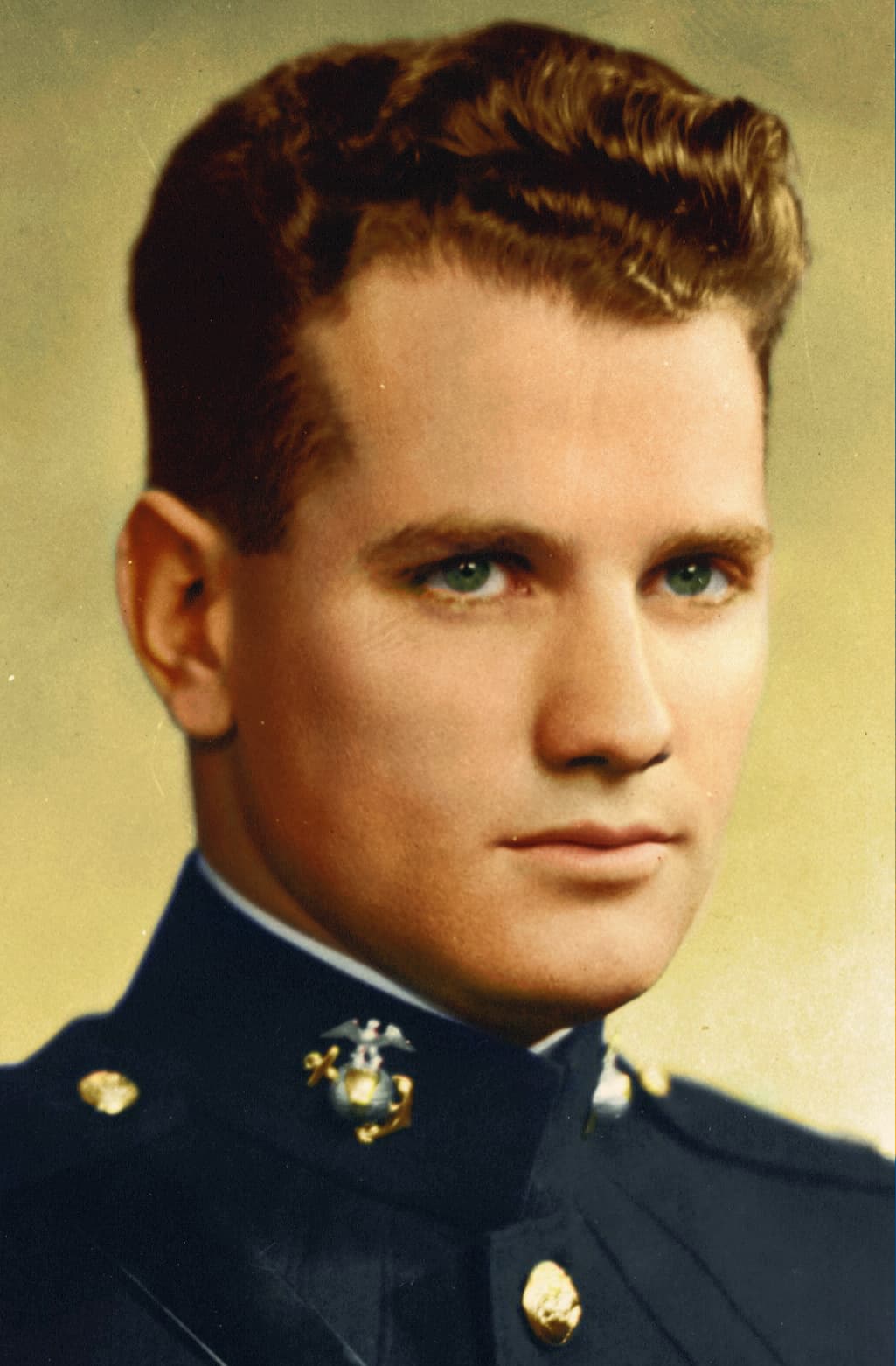
The President of the United States takes pleasure in presenting the Congressional MEDAL OF HONOR posthumously to
FIRST LIEUTENANT GEORGE H. CANNON
UNITED STATES MARINE CORPS
for service during an attack on the United States Fleet in Midway Islands as set forth in the following
CITATION:
For distinguished conduct in the line of his profession, extraordinary courage, and disregard of his own condition during the bombardment of Sand Island, Midway Islands, by Japanese forces on December 7, 1941. Lieutenant Cannon, Battery Commander of Battery “H”, Sixth Defense Battalion, Fleet Marine Force, U.S. Marine Corps, was at his Command Post when he was mortally wounded by enemy shell fire. He refused to be evacuated from his post until after his men, who had been wounded by the same shell were evacuated, and directed the reorganization of his Command Post until forcibly removed, and as a result of his utter disregard of his own condition he died from loss of blood.
FRANKLIN D. ROOSEVELT
1 Like
LT (AO) John William Finn, 32, USN (1909–2010)
VP-14, NAS Kaneohe Bay
Pearl Harbor, Hawaii
December 7, 1941
Presented September 14, 1942
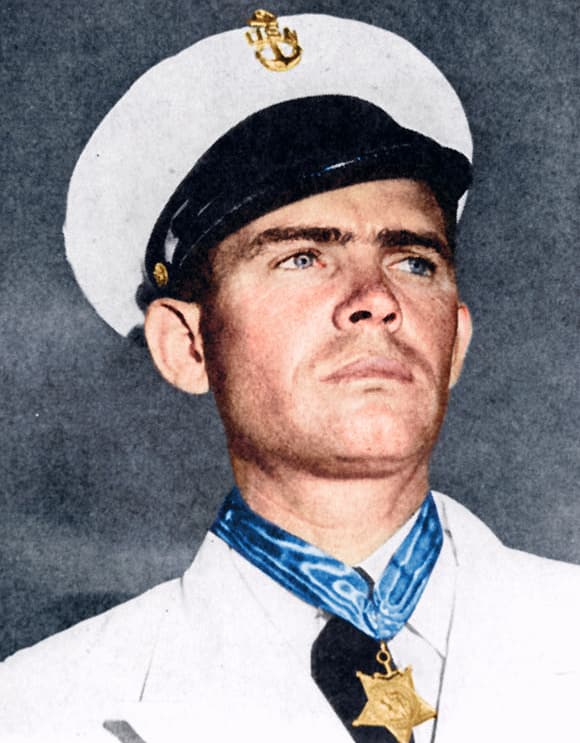
The President of the United States of America, in the name of Congress, takes pleasure in presenting the Medal of Honor to LT John William Finn, United States Navy, for extraordinary heroism distinguished service, and devotion above and beyond the call of duty.
During the first attack by Japanese airplanes on the Naval Air Station, Kaneohe Bay, on December 7, 1941, LT Finn promptly secured and manned a .50-caliber machine gun mounted on an instruction stand in a completely exposed section of the parking ramp, which was under heavy enemy machine gun strafing fire. Although painfully wounded many times, he continued to man this gun and to return the enemy’s fire vigorously and with telling effect throughout the enemy strafing and bombing attacks and with complete disregard for his own personal safety. It was only by specific orders that he was persuaded to leave his post to seek medical attention. Following first aid treatment, although obviously suffering much pain and moving with great difficulty, he returned to the squadron area and actively supervised the rearming of returning planes. His extraordinary heroism and conduct in this action were in keeping with the highest traditions of the U.S. Naval Service.
1 Like
ENS Francis Charles Flaherty, 22, USNR (1919–1941)
USS Oklahoma (BB-37)
Pearl Harbor, Hawaii
December 7, 1941
Presented March 6, 1946
Posthumous
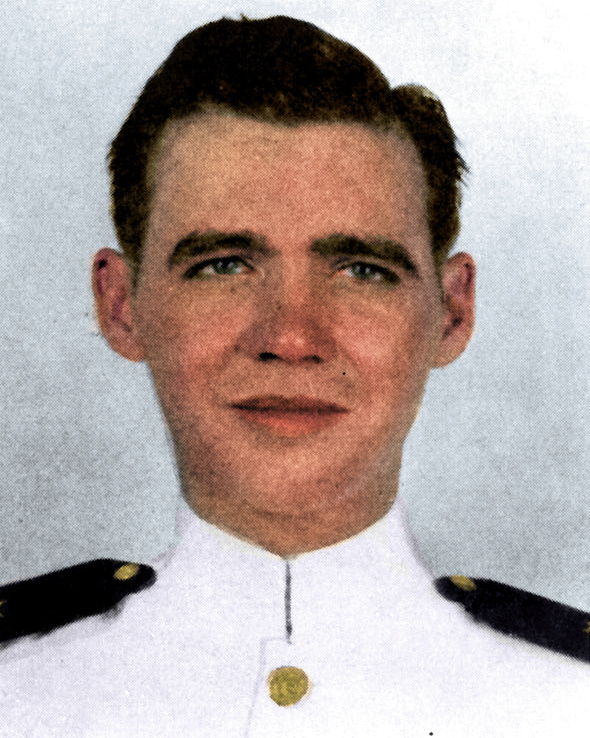
The President of the United States of America, in the name of Congress, takes pride in presenting the Medal of Honor (posthumously) to ENS Francis Charles Flaherty (NSN: 0-95690), United States Naval Reserve, for conspicuous devotion to duty and extraordinary courage and complete disregard of his own life, above and beyond the call of duty, during the attack on the Fleet in Pearl Harbor, Territory of Hawaii, by Japanese forces on December 7, 1941.
When it was seen that the USS OKLAHOMA (BB-37) was going to capsize and the order was given to abandon ship, ENS Flaherty remained in a turret, holding a flashlight so the remainder of the turret crew could see to escape, thereby sacrificing his own life.
1 Like
LCDR Samuel Glenn Fuqua, 42, USN (1899–1987)
USS Arizona (BB-39)
Pearl Harbor, Hawaii
December 7, 1941
Presented March 19, 1942

The President of the United States of America, in the name of Congress, takes pleasure in presenting the Medal of Honor to CAPT Samuel Glenn Fuqua, United States Navy, for distinguished conduct in action, outstanding heroism, and utter disregard of his own safety above and beyond the call of duty during the attack on the Fleet in Pearl Harbor, Territory of Hawaii, by Japanese forces on December 7, 1941.
Upon the commencement of the attack, LCDR Fuqua rushed to the quarterdeck of the USS ARIZONA (BB-39) to which he was attached where he was stunned and knocked down by the explosion of a large bomb which hit the quarterdeck, penetrated several decks, and started a severe fire. Upon regaining consciousness, he began to direct the fighting of the fire and the rescue of wounded and injured personnel. Almost immediately there was a tremendous explosion forward, which made the ship appear to rise out of the water, shudder, and settle down by the bow rapidly. The whole forward part of the ship was enveloped in flames which were spreading rapidly, and wounded and burned men were pouring out of the ship to the quarterdeck. Despite these conditions, his harrowing experience, and severe enemy bombing and strafing, at the time, LCDR Fuqua continued to direct the fighting of fires in order to check them while the wounded and burned could be taken from the ship and supervised the rescue of these men in such an amazingly calm and cool manner and with such excellent judgment that it inspired everyone who saw him and undoubtedly resulted in the saving of many lives. After realizing the ship could not be saved and that he was the senior surviving officer aboard, he directed it to be abandoned, but continued to remain on the quarterdeck and directed abandoning ship and rescue of personnel until satisfied that all personnel that could be had been saved, after which he left his ship with the boatload. The conduct of LCDR Fuqua was not only in keeping with the highest traditions of the Naval Service but characterizes him as an outstanding leader of men.
2 Likes
BOSN Edwin Joseph Hill, 47, USN (1894–1941)
USS Nevada (BB-36)
Pearl Harbor, Hawaii
December 7, 1941
Presented March 14, 1942
Posthumous

The President of the United States of America, in the name of Congress, takes pride in presenting the Medal of Honor (posthumously) to BOSN Edwin Joseph Hill, United States Navy, for distinguished conduct in the line of his profession, extraordinary courage, and disregard of his own safety during the attack on the Fleet in Pearl Harbor, Territory of Hawaii, by Japanese forces on December 7, 1941.
During the height of the strafing and bombing, BOSN Hill led his men of the line-handling details of the USS NEVADA (BB-36) to the quays, cast off the lines and swam back to his ship. Later, while on the forecastle, attempting to let go the anchors, he was blown overboard and killed by the explosion of several bombs.
2 Likes
ENS Herbert Charpoit Jones, 23, USNR (1918–1941)
USS California (BB-44)
Pearl Harbor, Hawaii
December 7, 1941
Presented March 14, 1942
Posthumous
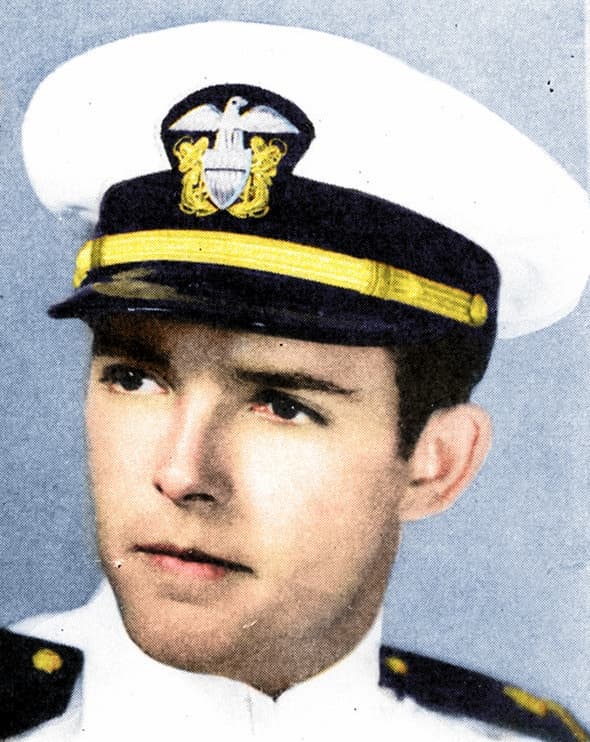
The President of the United States of America, in the name of Congress, takes pride in presenting the Medal of Honor (posthumously) to ENS Herbert Charpoit Jones, United States Naval Reserve, for conspicuous devotion to duty, extraordinary courage, and complete disregard of his own life, above and beyond the call of duty, during the attack on the Fleet in Pearl Harbor, Territory of Hawaii, by Japanese forces on December 7, 1941.
ENS Jones organized and led a party, which was supplying ammunition to the anti-aircraft battery of the USS CALIFORNIA (BB-44) after the mechanical hoists were put out of action when he was fatally wounded by a bomb explosion. When two men attempted to take him from the area which was on fire, he refused to let them do so, saying in words to the effect:
Leave me alone! I am done for. Get out of here before the magazines go off.
2 Likes
RADM Isaac Campbell Kidd, 57, USN (1884–1941)
Battleship Division 1 – USS Arizona (BB-39)
Pearl Harbor, Hawaii
December 7, 1941
Presented March 14, 1942
Posthumous
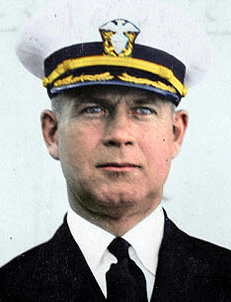
The President of the United States of America, in the name of Congress, takes pride in presenting the Medal of Honor (posthumously) to RADM Isaac Campbell Kidd (NSN: 0-5715), United States Navy, for conspicuous devotion to duty, extraordinary courage and complete disregard of his own life, during the attack on the Fleet in Pearl Harbor, Territory of Hawaii, by Japanese forces on December 7, 1941.
RADM Kidd immediately went to the bridge and, as Commander Battleship Division ONE, courageously discharged his duties as Senior Officer Present Afloat until the USS ARIZONA (BB-39), his Flagship, blew up from magazine explosions and a direct bomb hit on the bridge which resulted in the loss of his life.
2 Likes
GUN Jackson Charles Pharris, 29, USN (1912–1966)
USS California (BB-44)
Pearl Harbor, Hawaii
December 7, 1941
Presented June 25, 1948
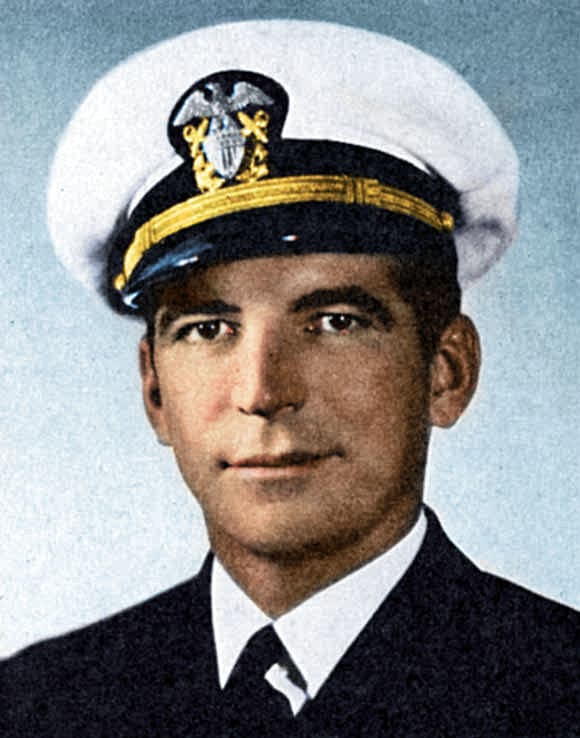
The President of the United States of America, in the name of Congress, takes pleasure in presenting the Medal of Honor to LT [then GUN] Jackson Charles Pharris, United States Navy, for conspicuous gallantry and intrepidity at the risk of his life above and beyond the call of duty while attached to the USS CALIFORNIA (BB-44) during the surprise enemy Japanese aerial attack on Pearl Harbor, Territory of Hawaii, December 7, 1941.
In charge of the ordnance repair party on the third deck when the first Japanese torpedo struck almost directly under his station, LT Pharris was stunned and severely injured by the concussion which hurled him to the overhead and back to the deck. Quickly recovering, he acted on his own initiative to set up a hand-supply ammunition train for the anti-aircraft guns. With water and oil rushing in where the port bulkhead had been torn up from the deck, with many of the remaining crew members overcome by oil fumes, and the ship without power and listing heavily to port as a result of a second torpedo hit, LT Pharris ordered the shipfitters to counterflood. Twice rendered unconscious by the nauseous fumes and handicapped by his painful injuries, he persisted in his desperate efforts to speed up the supply of ammunition and at the same time repeatedly risked his life to enter flooding compartments and drag to safety unconscious shipmates who were gradually being submerged in oil. By his inspiring leadership, his valiant efforts and his extreme loyalty to his ship and her crew, he saved many of his shipmates from death and was largely responsible for keeping the CALIFORNIA in action during the attack. His heroic conduct throughout this first eventful engagement of World War II reflects the highest credit upon LT Pharris and enhances the finest traditions of the U.S. Naval Service.
2 Likes
CRM Thomas James Reeves, 46, USN (1895–1941)
USS California (BB-44)
Pearl Harbor, Hawaii
December 7, 1941
Presented March 1942
Posthumous

The President of the United States of America, in the name of Congress, takes pride in presenting the Medal of Honor (posthumously) to CRM Thomas James Reeves, United States Navy, for distinguished conduct in the line of his profession, extraordinary courage and disregard of his own safety during the attack on the Fleet in Pearl Harbor, Territory of Hawaii, by Japanese forces on December 7, 1941.
After the mechanized ammunition hoists were put out of action in the USS CALIFORNIA (BB-44), CRM Reeves, on his own initiative, in a burning passageway, assisted in the maintenance of an ammunition supply by hand to the anti-aircraft guns until he was overcome by smoke and fire, which resulted in his death.
1 Like
CHMACH Donald Kirby Ross, 31, USN (1910–1992)
USS Nevada (BB-36)
Pearl Harbor, Hawaii
December 7, 1941
Presented April 18, 1942

The President of the United States of America, in the name of Congress, takes pleasure in presenting the Medal of Honor to CHMACH Donald Kirby Ross, United States Navy, for distinguished conduct in the line of his profession, extraordinary courage and disregard of his own life during the attack on the Fleet in Pearl Harbor, Territory of Hawaii, by Japanese forces on December 7, 1941.
When his station in the forward dynamo room of the USS NEVADA (BB-36) became almost untenable due to smoke, steam, and heat, CHMACH Ross forced his men to leave that station and performed all the duties himself until blinded and unconscious. Upon being rescued and resuscitated, he returned and secured the forward dynamo room and proceeded to the after dynamo room where he was later again rendered unconscious by exhaustion. Again recovering consciousness he returned to his station where he remained until directed to abandon it.
MM1 Robert Raymond Scott, 26, USN (1915–1941)
USS California (BB-44)
Pearl Harbor, Hawaii
December 7, 1941
Presented March 1942
Posthumous
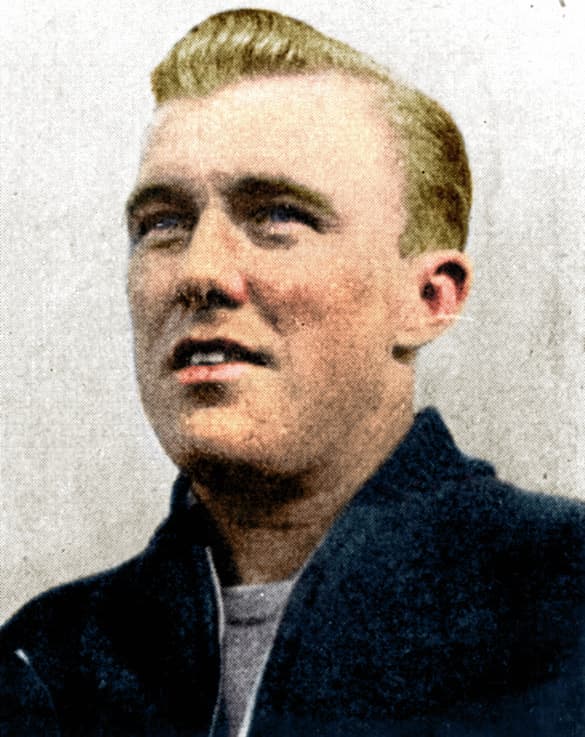
The President of the United States of America, in the name of Congress, takes pride in presenting the Medal of Honor (posthumously) to MM1 Robert Raymond Scott, United States Navy, for conspicuous devotion to duty, extraordinary courage and complete disregard of his own life, above and beyond the call of duty, during the attack on the Fleet in Pearl Harbor, Territory of Hawaii, by Japanese forces on December 7, 1941.
The compartment, in the USS CALIFORNIA (BB-44), in which the air compressor, to which MM1 Scott was assigned as his battle station, was flooded as the result of a torpedo hit. The remainder of the personnel evacuated that compartment but Scott refused to leave, saying words to the effect:
This is my station and I will stay and give them air as long as the guns are going.
1 Like
CWT Peter Tomich, 48, USN (1893–1941)
USS Utah (AG-16)
Pearl Harbor, Hawaii
December 7, 1941
Presented January 4, 1944
Posthumous
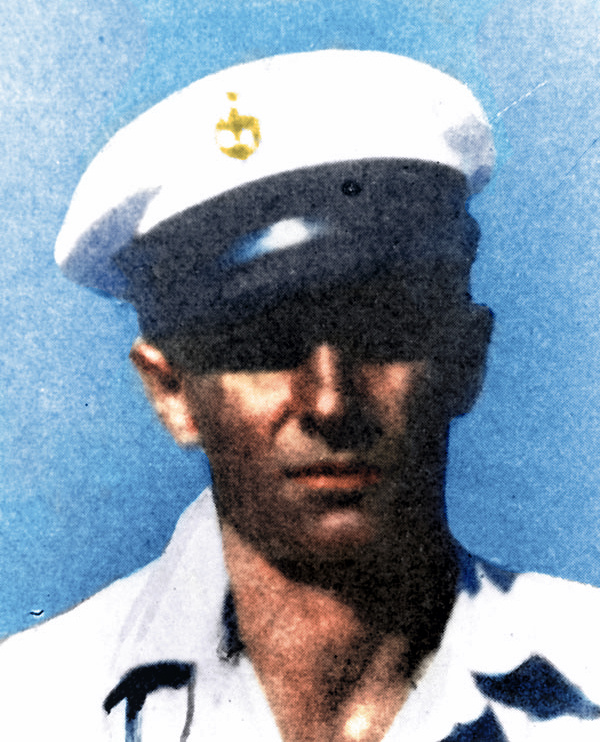
The President of the United States of America, in the name of Congress, takes pride in presenting the Medal of Honor (posthumously) to CWT Peter Tomich (NSN: 2276370), United States Navy, for distinguished conduct in the line of his profession, and extraordinary courage and disregard of his own safety, during the attack on the Fleet in Pearl Harbor, Territory of Hawaii, by the Japanese forces on December 7, 1941.
Although realizing that the ship was capsizing, as a result of enemy bombing and torpedoing, CWT Tomich remained at his post in the engineering plant of the USS UTAH (AG-16), until he saw that all boilers were secured and all fireroom personnel had left their stations, and by so doing lost his own life.
1 Like
CAPT Franklin Van Valkenburgh, 53, USN (1888–1941)
USS Arizona (BB-39)
Pearl Harbor, Hawaii
December 7, 1941
Presented March 14, 1942
Posthumous
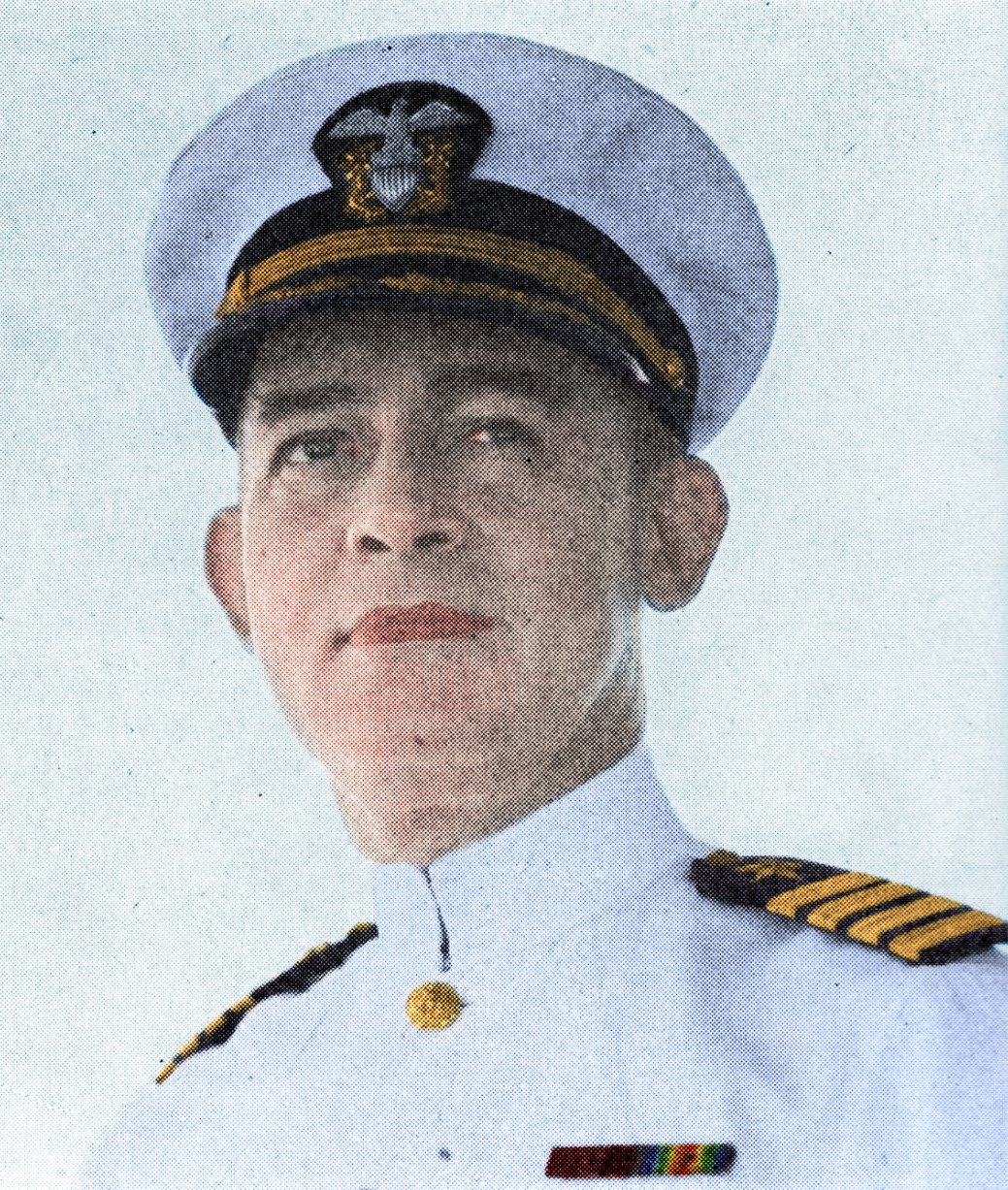
The President of the United States of America, in the name of Congress, takes pride in presenting the Medal of Honor (posthumously) to CAPT Franklin Van Valkenburgh (NSN: 0-7187), United States Navy, for distinguished conduct in action, outstanding heroism, and utter disregard of his own safety above and beyond the call of duty during the attack on the Fleet in Pearl Harbor, Territory of Hawaii, by Japanese forces on December 7, 1941.
As Commanding Officer of the USS ARIZONA (BB-39), CAPT Van Valkenburgh gallantly fought his ship until the USS ARIZONA blew up from magazine explosions and a direct bomb hit on the bridge which resulted in the loss of his life.
1 Like
S1 James Richard Ward, 20, USN (1921–1941)
USS Oklahoma (BB-37)
Pearl Harbor, Hawaii
December 7, 1941
Presented March 14, 1942
Posthumous
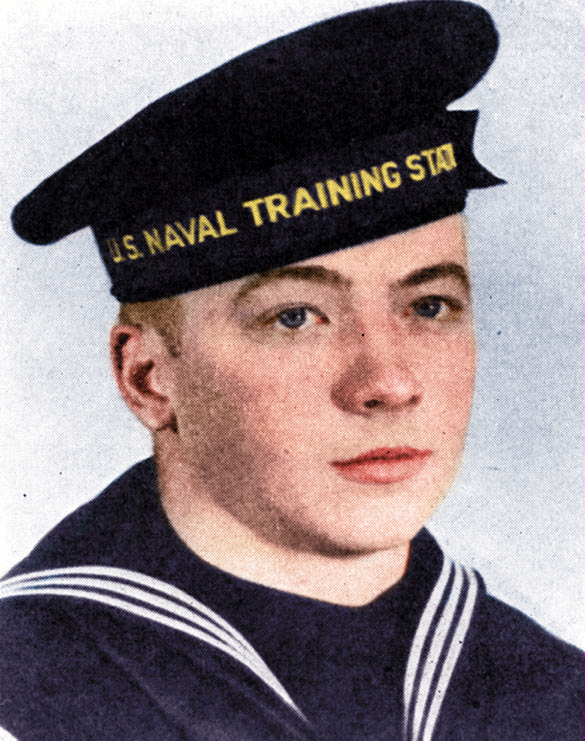
The President of the United States of America, in the name of Congress, takes pride in presenting the Medal of Honor (posthumously) to S1 James Richard Ward (NSN: 2797555), United States Navy, for conspicuous devotion to duty, extraordinary courage and complete disregard of his life, above and beyond the call of duty, during the attack on the Fleet in Pearl Harbor, Territory of Hawaii, by Japanese forces on December 7, 1941.
When it was seen that the USS OKLAHOMA (BB-37) was going to capsize and the order was given to abandon ship, S1 Ward remained in a turret holding a flashlight so the remainder of the turret crew could see to escape, thereby sacrificing his own life.
1 Like
CDR Cassin Young, 47, USN (1894–1942)
USS Vestal (AR-4)
Pearl Harbor, Hawaii
December 7, 1941
Presented April 18, 1942

The President of the United States of America, in the name of Congress, takes pleasure in presenting the Medal of Honor to CDR Cassin Young (NSN: 0-9615), United States Navy, for distinguished conduct in action, outstanding heroism and utter disregard of his own safety, above and beyond the call of duty, as Commanding Officer of the USS VESTAL (AR-4), during the attack on the Fleet in Pearl Harbor, Territory of Hawaii, by enemy Japanese forces on December 7, 1941.
CDR Young proceeded to the bridge and later took personal command of the three-inch anti-aircraft gun. When blown overboard by the blast of the forward magazine explosion of the USS ARIZONA (BB-39), to which the USS VESTAL was moored, he swam back to his ship. The entire forward part of the USS ARIZONA was a blazing inferno with oil afire on the water between the two ships; as a result of several bomb hits, the USS VESTAL was afire in several places, was settling and taking on a list. Despite severe enemy bombing and strafing at the time, and his shocking experience of having been blown overboard, CDR Young, with extreme coolness and calmness, moved his ship to an anchorage distant from the USS ARIZONA, and subsequently beached the USS VESTAL upon determining that such action was required to save his ship.
1 Like
Capt Henry Talmage Elrod, 36, USMC (1905–1941)
VMF-21, MAG-22
NAS Wake Island, Wake Island
December 8-23, 1941
Presented November 8, 1946
Posthumous
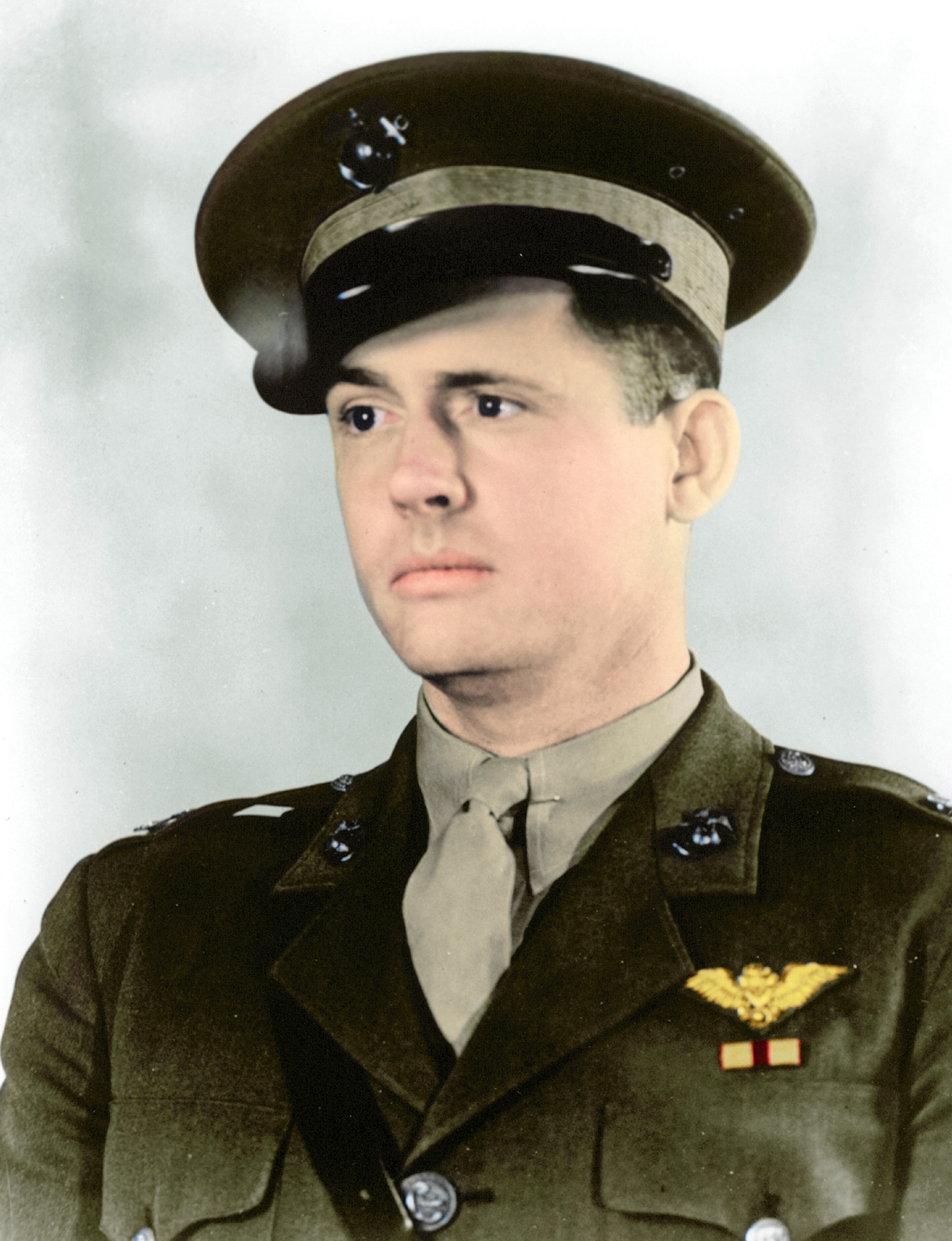
The President of the United States of America, in the name of Congress, takes pride in presenting the Medal of Honor (posthumously) to Capt Henry Talmage Elrod, United States Marine Corps, for conspicuous gallantry and intrepidity at the risk of his life above and beyond the call of duty while attached to Marine Fighting Squadron TWO HUNDRED ELEVEN (VMF-211), Marine Air Group TWENTY-TWO (MAG-22), Naval Air Station, Wake Island, during action against enemy Japanese land, surface and aerial units at Wake Island, December 8-23, 1941.
Engaging vastly superior forces of enemy bombers and warships on December 9 and 12, Capt Elrod shot down two of a flight of 22 hostile planes and, executing repeated bombing and strafing runs at extremely low altitude and close range, succeeded in inflicting deadly damage upon a large Japanese vessel, thereby sinking the first major warship to be destroyed by small caliber bombs delivered from a fighter-type aircraft. When his plane was disabled by hostile fire and no other ships were operative, Capt Elrod assumed command of one flank of the line set up in defiance of the enemy landing and, conducting a brilliant defense, enabled his men to hold their positions and repulse intense hostile fusillades to provide covering fire for unarmed ammunition carriers. Capturing an automatic weapon during one enemy rush in force, he gave his own firearm to one of his men and fought on vigorously against the Japanese. Responsible in a large measure for the strength of his sector’s gallant resistance, on December 23, Capt Elrod led his men with bold aggressiveness until he fell, mortally wounded. His superb skill as a pilot, daring leadership and unswerving devotion to duty distinguished him among the defenders of Wake Island, and his valiant conduct reflects the highest credit upon himself and the U.S. Naval Service. He gallantly gave his life for his country.
















